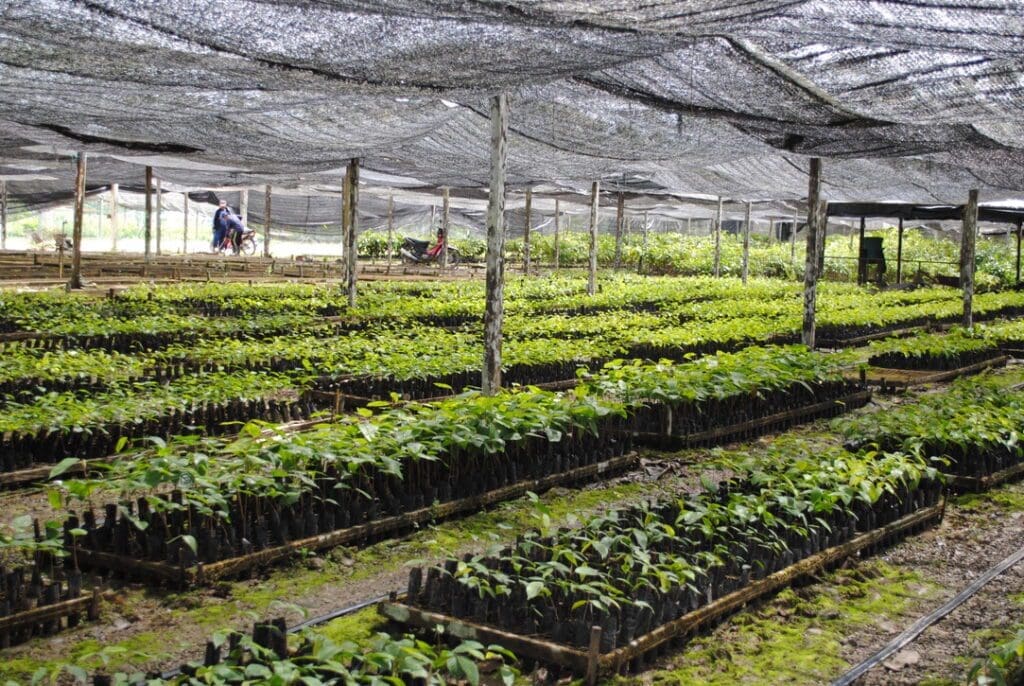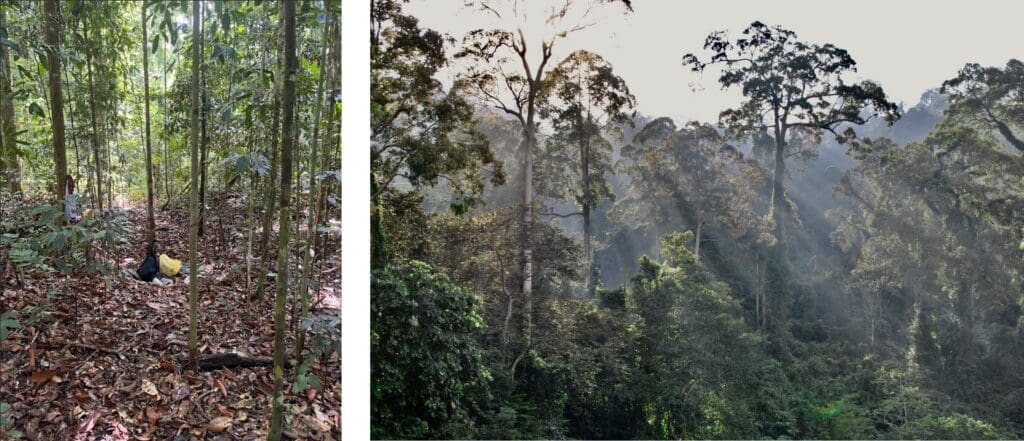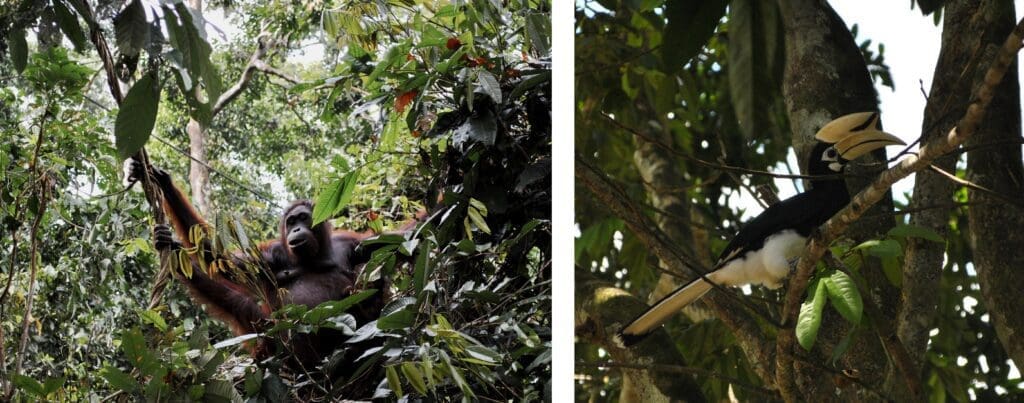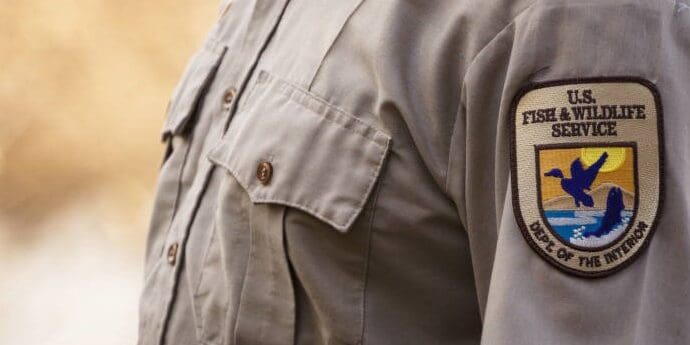How we can improve biodiversity while planting trees to benefit climate
This blog post was written by Dr Nadine Keller, Postdoctoral Researcher at Centre of Nature-based Climate Solutions, National University of Singapore.


There has been a renaissance of tree planting schemes around the world in recent years, with more governments recognising the role that nature plays in tackling climate change. For instance, countries like India, by pledging to the Bonn Challenge, have rolled out nationwide tree planting schemes to restore 26 million hectares of land by 2030 as a climate mitigation strategy. However, in addition to a climate crisis, the world is also battling the challenges posed by loss of biodiversity. Nature-based solutions, such as ecosystem restoration efforts, could help in tackling the twin crises. But while planting trees can help with the drawdown of carbon dioxide from the atmosphere, the evidence for how such schemes should be executed so they also benefit biodiversity remains limited.
Active forest restoration in Sabah
Given the impact that humans have caused on the natural environment over the millennia, it is unsurprising that there is a perception that human intervention is detrimental to nature. However, this perception is not always supported by evidence. My recent study in Sabah, Malaysian Borneo [1], suggests that the opposite could be true when it comes to trying to restore a degraded forest to its former glory. The study found that, if properly executed, active reforestation efforts – such as planting seedlings and pruning climbers like lianas – could help to increase tree species diversity in a forest. Species diversity is a key determinant of forest health and functioning, because more species can support forest functioning in different ways [2], leading to an overall increased forest health and resilience [3]. At my study site, I not only found higher tree diversity in sites with active restoration efforts compared to sites where forests were left to regenerate naturally, I also observed that rare species occur more abundantly.
Roughly, restoration efforts can be categorized by the level of human assistance involved. There might be no, or very little (e.g. cessation of logging, agricultural land retirement) human assistance required, and forests regenerate naturally. This is known as passive restoration. Restoration with more human assistance (i.e. active restoration) might entail a variety of silvicultural interventions, ranging from biotic interventions like tree planting, climber cutting, or management of invasive species, to abiotic interventions like soil remediation, reshaping of watercourses, etc.


For Southeast Asia’s forests, some sort of assistance is often required or even unavoidable from an ecological perspective. Tropical rainforests in the region are dominated by dipterocarps, a group of trees which are slow and gradual colonisers. They produce seeds only every 2–10 years and the seeds often go no farther than 10 m from the mother tree. To re-populate an area of 100 metre length could therefore, in the best case, take around 100 years (assuming the unlikely case that trees start producing seeds already 10 years after germination).
Before restoration, the region in which I conducted my research was heavily logged in the 80s and 90s, whereby the extracted wood of, mainly, dipterocarp species was primarily processed to paper. With the aim to produce more timber for the future, seedlings of dipterocarp and other tree species were planted between 1993 and 2004 by the Dutch organization Face Forests B.V. These seedlings were planted along lines which were cleared from other vegetation to reduce the competition for light, water, and nutrients. For the same reason – to reduce competition and enhance survival chances – lianas were cut. However, there was not sufficient funding to actively restore the entire area, and some parts were left to regenerate naturally. What seems like a pity from a conservation point of view, has in fact turned out to be a scientific blessing; this unevenly restored landscape enables us to compare the long-term success of active and passive restoration in an ecologically comparable way (i.e. same climatic conditions, forest type, etc.).


The findings – increased tree diversity through active restoration – were surprising to me, as I had expected that active forest restoration would have a negative impact on tree diversity. This is because previous research indicated that restoration projects often plant fewer species than would occur naturally [4]. Indeed, in my restoration site, a total of 76 different tree species were used for enrichment planting over an area of around 9,000 ha. What sounds like a high number becomes ridiculously small when compared to how many species occur in undisturbed forests: in a nearby observation plot sized 50 ha, more than 500 species were counted!
Restoration success is context dependent
I believe that active restoration partly could have led to the higher species diversity as the silvicultural interventions, like liana cutting and line clearing, helped ensure the survival of the planted seedlings. After planting, these seedlings were not monitored, but species that were planted by local contractors were found in higher densities in the actively restored sites compared to sites that regenerated naturally – an indication that the planted seedlings established themselves. This is not trivial: the planting of seedlings does not guarantee that they can grow to maturity. For example, after Turkey embarked on a mass tree planting exercise in 2019, government officials found that over 90% of the planted seedlings died after three months [5].
There were likely other localised factors at play that contributed to the study’s key findings, including the extent of degradation and efforts to incorporate knowledge of the local communities in the recovery. For example, even though the forests in Sabah were heavily degraded, no extensive clear-cuts were executed. Instead, there were still forest remnants present which likely facilitated the forest recovery. Furthermore, many of the local contractors and forest rangers involved have been working in the forest for generations. They had intimate knowledge on the forest and the best practices such as ideal growing conditions for certain species, nursing of seeds, efficient vegetation clearing, etc. needed to help the forest thrive.
Further studies need to be done to determine whether it was a specific restoration action, such as tree planting or climber cutting, that promoted tree diversity, or whether the result was due to all the silvicultural interventions combined. The results indicate that active restoration efforts can help tackle the twin planetary crises of biodiversity loss and climate change by promoting carbon sequestration (cf. [6]) and tree diversity. While natural regeneration functions as the cheaper restoration solution, assisted restoration is considered as a way to expedite the recovery of the forests – and provide a host of other ecosystem services as well, including the generation of jobs (since running tree nurseries and implementing silvicultural interventions requires a lot of manual workforce), and positively influence the perception of secondary forests, making them less prone to be re-logged.


Forest restoration strategies are context-specific and complex. As a result, it is difficult to formulate generally applicable recommendations for forest restoration management. This might be a reason why knowledge on the efficacy of restoration is so rare. And yet, the United Nations declared the current decade as the “UN Decade on Ecosystem Restoration”, and within the framework of the Bonn challenge, countries globally have pledged to restore 350 million hectares of land by 2030, making restoration ecology more important than ever.
Missing the forest for the trees
Climate change and the current ecological crisis require immediate and effective solutions. The restoration of formerly destroyed or degraded forests is considered as a promising nature-based solution. Tree-planting alone, however, does not guarantee the creation of a healthy forest. Although the results of our study found a positive, human influence, we still lack knowledge on how active forest restoration affects many other forest characteristics and processes relevant to ensure the survival of the forests. In order to truly address the ecological crisis we want to aim for forests that are capable of regenerating themselves, ensuring the production and germination of seedlings, and nutrient and water cycling. After all, we should not miss the forest for the trees.
References
[1] Keller N., Niklaus P.A., Ghazoul J., Marfil T., Godoong E. & Philipson C.D. (2023) Biodiversity consequences of long-term active forest restoration in selectively-logged tropical rainforests. Forest Ecology and Management, 549, 121414. https://doi.org/10.1016/j.foreco.2023.121414
[2] Thompson I., Ferreira J., Gardner T. et al. (2012) Forest biodiversity, carbon and other ecosystem services: relationships and impacts of deforestation and forest degradation. Pages 21–50 in: J.A. Parotta, C. Wildburger & S. Mansourian (eds.) Understanding Relationships Between Biodiversity, Carbon, Forests and People: The Key to Achieving REDD+ Objectives. A global assessment report prepared by the Global Forest Expert Panel on Biodiversity, Vienna. IUFRO World Series Volume 31.
[3] Aerts R. & Honnay O. (2011) Forest restoration, biodiversity and ecosystem functioning. BMC Ecology, 11, Article 29. https://doi.org/10.1186/1472-6785-11-29
[4] Crouzeilles R., Ferreira M.S., Chazdon R.L. et al. (2017) Ecological restoration success is higher for natural regeneration than for active restoration in tropical forests. Science Advances, 3, e1701345. https://doi.org/10.1126/sciadv.1701345
[5] Kent S. (2020) Most of 11m trees planted in Turkish project ‘may be dead’. https://www.theguardian.com/world/2020/jan/30/most-of-11m-trees-planted-in-turkish-project-may-be-dead
[6] Philipson C.D., Cutler M.E.J., Brodrick P.G. et al. (2020) Active restoration accelerates the carbon recovery of human-modified tropical forests. Science, 369, 838–841. https://doi.org/10.1126/science.aay4490



